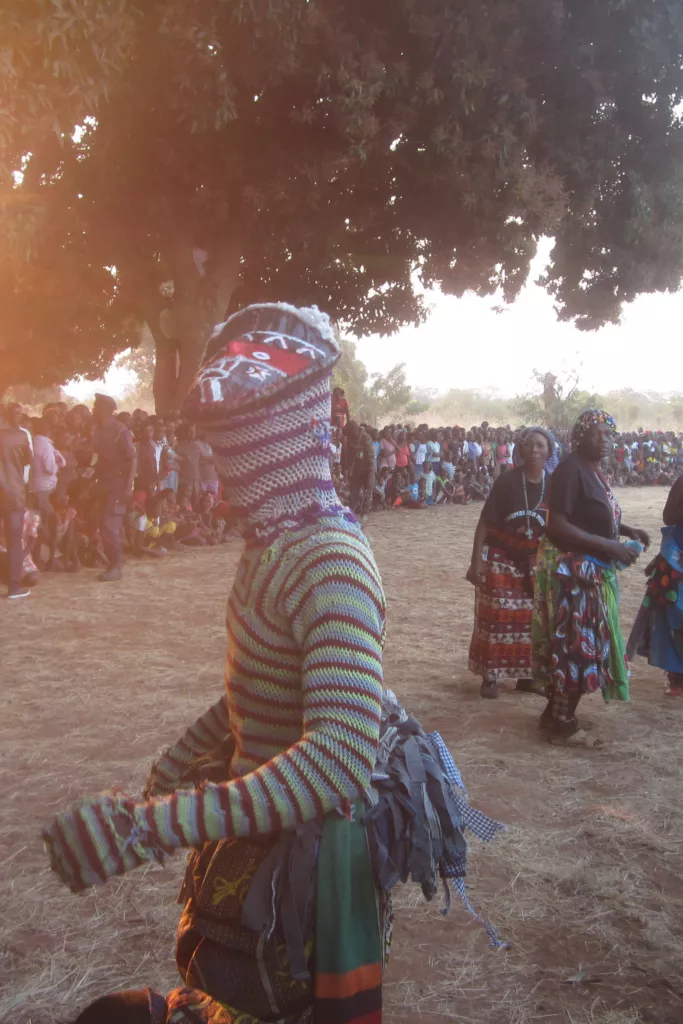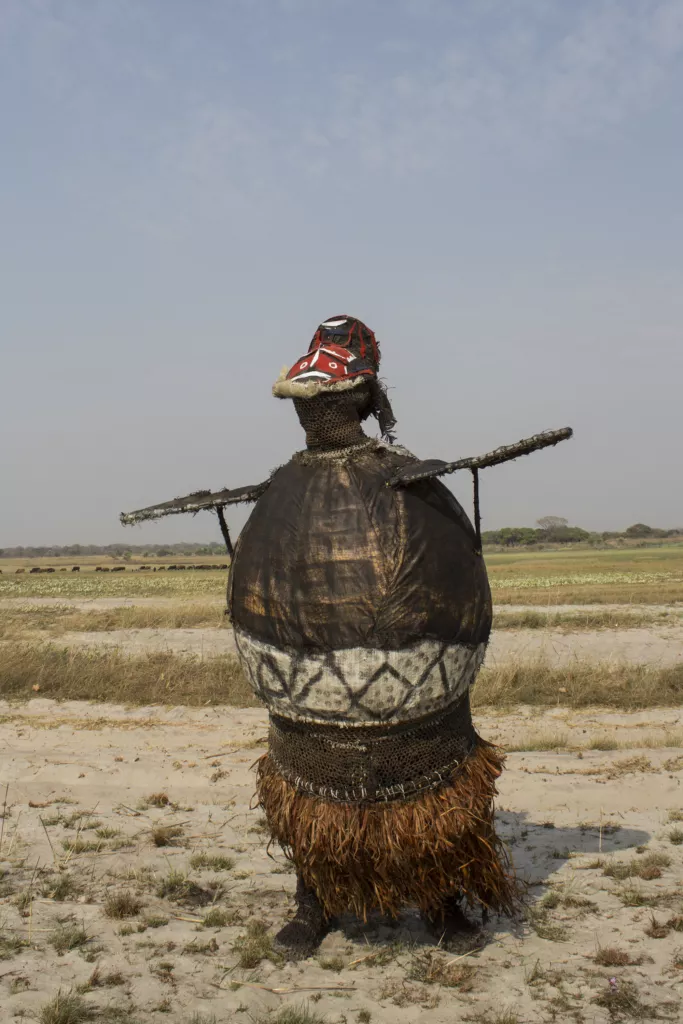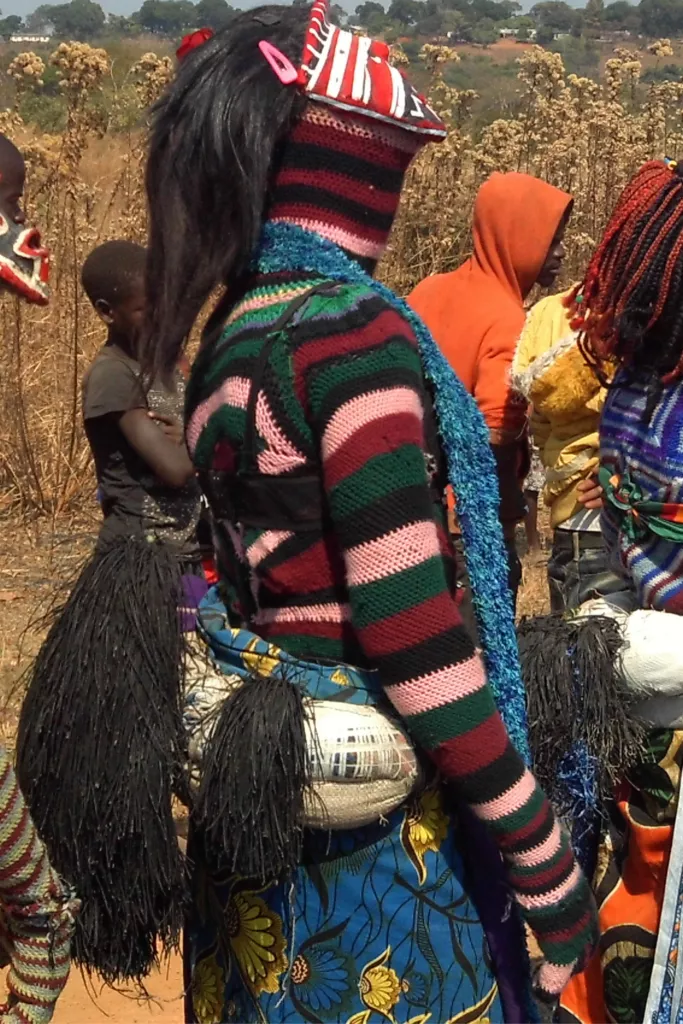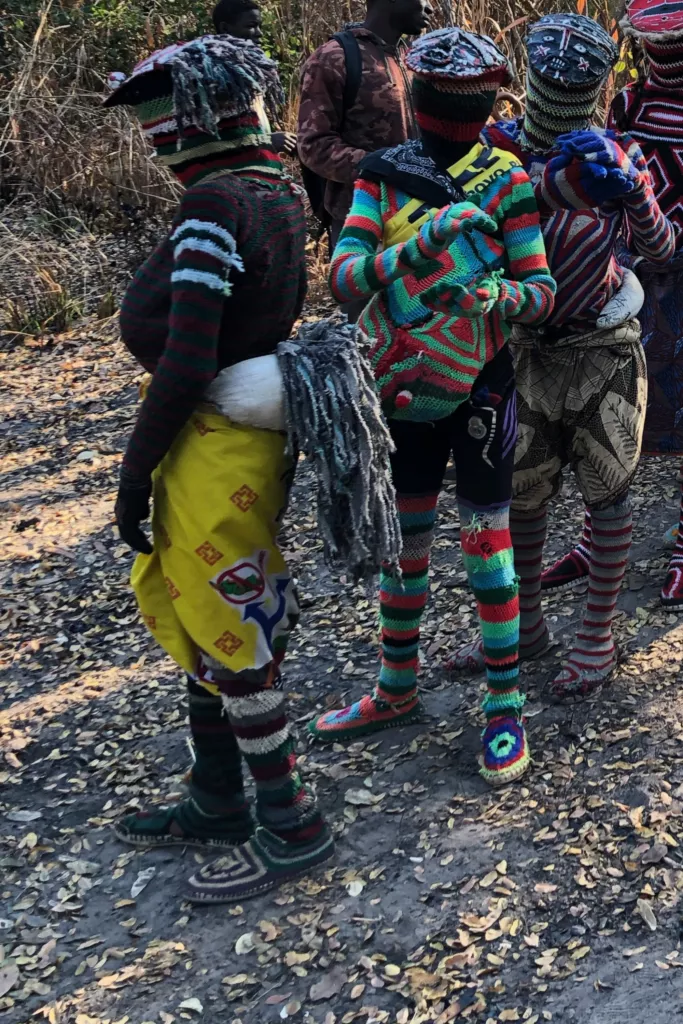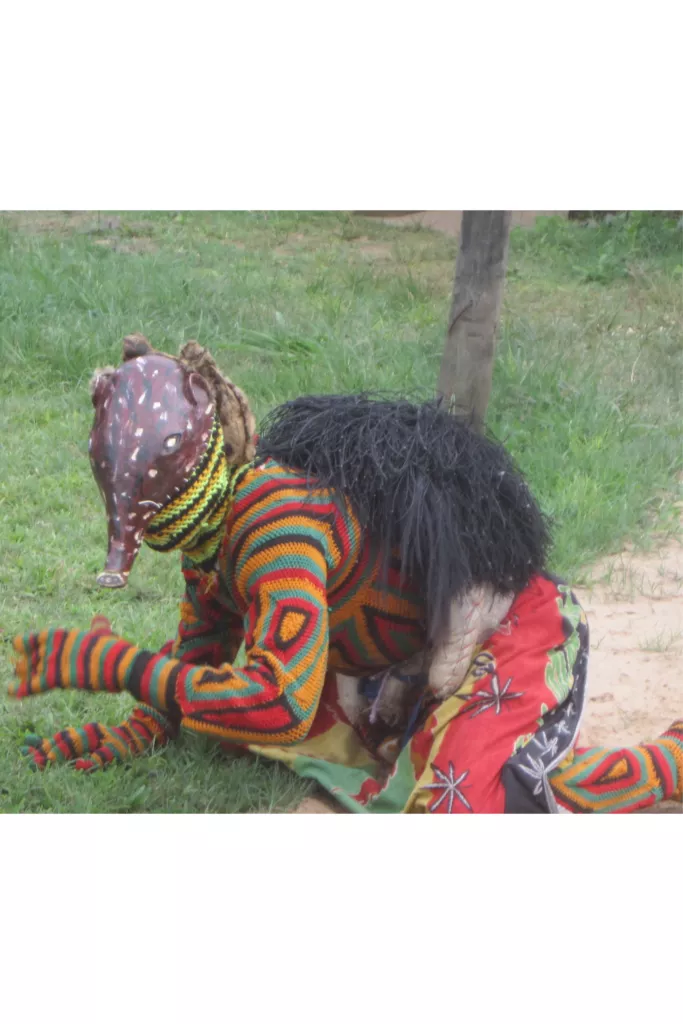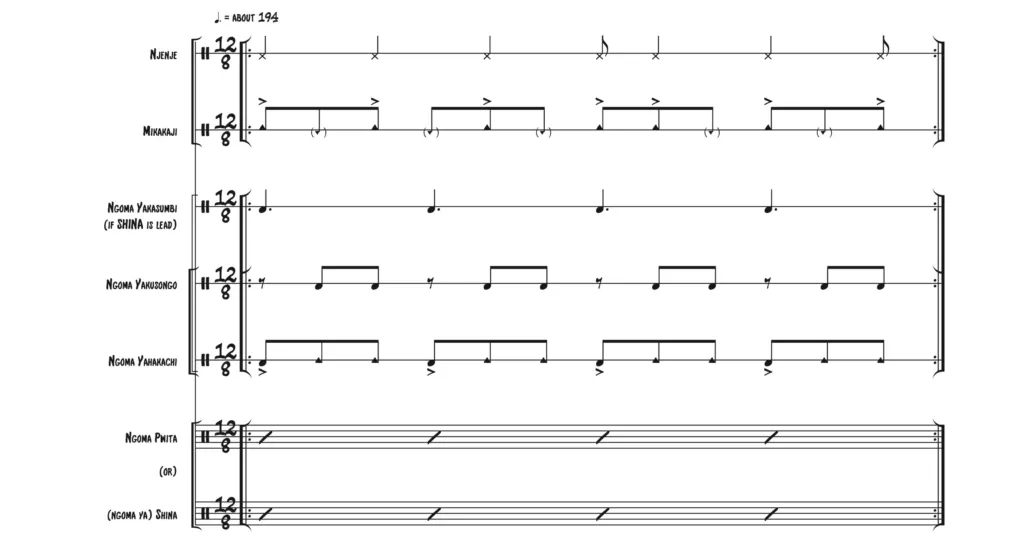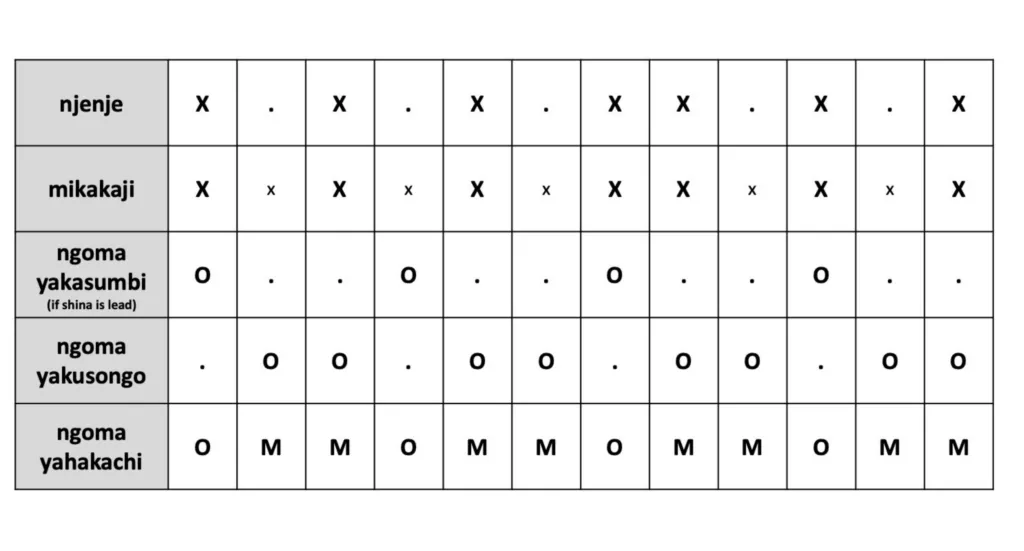Mwokolo
Alternate Spellings: Mokolo, Muwokolo
for higher quality audio, check upcoming ILAM PROJECT; for higher quality video, download from “Videos of Luvale (and Related) Sonic Culture” link
Origin: Luvale
Along with Chiyanda, Mwokolo is the primary dance of this cultural region. Though its roots may lie within the female puberty ritual (called wali or litungu), it is more commonly associated with recreational settings. In this way, it acts as a sort of parallel to the Chokwe dance of Chisela; both can be for vamyali (female initiates) but are more frequently performed for fun outside of ceremonial settings by all genders. Mwokolo is a common dance for professional troupes, especially those fronted by Mwana Pwevo. These groups may perform Mwokolo for entertainment at hired events or in bars and nightclubs with the goal of earning money. Like Chiyanda, Mwokolo offers opportunities for skilled dancers to share the spotlight or occupy it alone. Should company be desired, a featured dancer may request backup from the group or coax audience members to join.
Ever the showstopper, Mwana Pwevo also occasionally turns festivals into spectacles with her performances of Mwokolo. To this music, she may dance on a floating mattress on the Zambezi River or atop poles 30 feet high (Bastin 1992, 43).1 Though these performances are the most dramatic, other makishi also entertain crowds to the sounds of Mwokolo. Akin to Chiyanda and Machakili, the other spirits who perform this dance are those who playfully interact with or represent women and girls. Most of these makishi wear a chiwamba (dancing waist belt) and lihina (a skirt of chitenge traditional fabric) and usually sport jisangu (leg rattles).
Again similar to Chiyanda, this dance is characterized by a variety of styles waist-isolating moves. When makishi dance Mwokolo, they often try to execute these moves in a way that embodies youthful femininity. Due to its ubiquitous use – especially by professional musicians – Mwokolo drumming has reached a virtuosic level. It is one of the faster styles from this region, often features skillfully improvised breaks from supporting drummers, and showcases lead drum prowess. Many singers choose to compose new songs in this genre. The drumming for Mwokolo is very similar to that of Fwifwi though there are key differences in instrumentation, tempo, songs, and dance moves.
Makishi Who Dance Mwokolo
not pictured: Chikwekwe, Kapyasa, Samasengo
Instrumentation
When performed for makishi:
- Lead drum: ngoma pwita
- Supporting drums: ngoma yahakachi, ngoma yakusongo
- Timeline: mikakaji, njenje (frequently)
When performed for humans:
- Lead drum: ngoma ya shina
- Supporting drums: ngoma yahakachi, ngoma yakusongo, ngoma yakasumbi (sometimes)
- Timeline: mikakaji, njenje (sometimes)
Mwokolo Interactive Mixer
Recorded by Chota in Kabwata Village in Lusaka, Zambia on October 30, 2021.
works best in Chrome & Firefox; allow each track to start loading before playing, refresh if necessary
| njenje | performed by Andrew Wakumelo | |
| mikakaji | performed by Musoka Kafweba | |
| ngoma yakusongo | performed by William Vunda | |
| ngoma yahakachi | performed by William Vunda | |
| ngoma pwita | performed by William Vunda |
Alternate Supporting Drum Parts
Alternate Timeline Parts
- Bastin, Marie-Louise. 1992. “Musical Instruments, Songs and Dances of the Chokwe (Dundo Region, Lunda District, Angola).” Journal of the International Library of African Music 7 (2): 23–44. ↩︎

